HIStalk Interviews Joshua Newman, MD, Chief Medical Officer, Salesforce
Joshua Newman, MD, MSHS is chief medical officer and GM of healthcare and life sciences at Salesforce.

Most healthcare IT systems involve back office functions that are, to patients at least, invisible at best or intrusive at worst. Do you see that changing?
We do. The proof point is that we’ve been doing it already. We’ve been doing it for five or six years. But we also see it changing because the current needs of healthcare seem to be much more around that kind of end-user experience and less about the back office stuff.
If you look at where the reimbursement’s going, if you look at value-based care, or if you just want to look at the competition that’s being caused by the ACA and all the new people with insurance and so on, you see that it’s around patient experience. It’s around consumer expectations. It’s around value-based reimbursement and outcomes. It’s about helping people take care of themselves at home, responding to their text messages, being able to send a message of support, and so on.
Johns Hopkins posted a study saying if you have a relationship with a doctor, you lose more weight. It’s just one example of how relationships, patient outreach, devices, mobility, all of those kinds of things are starting to be the coin of the realm. What I mean by that is not only are they they right thing to do for health, but they’re also being reimbursed.
What are Salesforce’s major efforts in healthcare?
You may know we’re the number one CRM company. We’ve got this very broad platform that does a lot of things. Outside of healthcare, it’s marketing, sales, and service. There’s a Communities app, which is like a portal. We have analytics and an app development platform.
What we want to do for healthcare is what we’ve done for business, which is to enable those relationships. Service Cloud is our product name. It’s like a call center app, but customized for healthcare so that everyone can have that same relationship with the patient wherever they are, on any device, to support healthcare. Not the stuff the EMR does — not medication ordering, laboratory ordering and resulting, or procedure ordering or notes — but the interpersonal communication that supports the success of those other things.
Will it be difficult for providers to make the transition from one-time billed episodes to developing ongoing, health-encouraging relationships with consumers?
It’s funny you ask that question, saying it’s the new thing. The reality is it’s the old thing. It’s the original thing we were doing before we had any technology or anything.
I was trained as a family doc. I had other faculty members, like the wise old family docs, who used to tell me not that long ago, "Write in the margins of the paper record the patient’s occupation, their kids’ names, their pets’ names.” All those things. That was the beginning of my exposure to CRM. Understand who this person really is so you can build a connection and have an impact on them.
I think because the EMRs are so focused on those kinds of fee-per-service, episodic elements, it took away a lot of that. Frankly, those systems weren’t that flexible, so it made it harder to do those things. I think now with this and with the reimbursement that’s facing it and the value of it, people are amenable to it.
The second part of your question, though, are people going to be able to do it? That’s going to be a hard thing to solve. Work flow changes in healthcare, new innovations even when they’re proven … even a medication that’s proven to be great with no side effects still takes five years to diffuse. Something like this that’s a little more complicated, that takes new jobs and new training, is going to be a little harder. Our thought is the technology is going to be able to help people do it.
What we’ve seen outside of healthcare is that when people have really good tools that make it easy to use and to succeed, they’re a little more willing to change. In fact, we see that all the time.
Just so you know, I’m not under any kind of false hope that it’s going to be simple. Healthcare changes slowly.
In healthcare we individually feel that we have a relationship from our providers and caregivers when we’re receiving care, but in that 99 percent of the time we’re not in the ED, an exam room, or a hospital bed, the faceless bureaucracy doesn’t care about us. If hospitals turn this relationship function over to the marketing department, will it feel genuine to patients or will it be like receiving unwanted calls from an aggressive telemarketer?
I’m not seeing this as like cold calls or marketing. I’m seeing this more as when you’re on your bank website, you can’t figure out what to do, and all of a sudden the chat window comes up and there’s someone who can answer your question. It feels really good.
I use an application called TripIt that brings together all my travel plans in one place. I don’t feel like I’m in a herd of cattle running through the airport. I know where I’m going to go. When I land at the airport, if there’s been a delay, I get this alert automatically sent to me saying the gate’s over here, the gate’s been changed, or you’re late, so go here or do that.
Those simple kinds of tools are available. The data is available, although the systems that own it aren’t flexible. But if you put it in something like Salesforce or any kind of modern tool, the possibility exists to make people at least feel like the system is understanding them.
That’s from the technology side, a little more of the impersonal side. Then when you want to add the idea of, if I ever have a question, I can text message a care coordinator. If I ever have a problem, I know who to call and they have instant visibility into my clinical systems; who my informal caregiver is; what language I like to speak; or what my preferences are for communications, whether it’s mobile or email or phone. Even those simple, simple things would be profound in healthcare because they don’t really exist.
It’s going to enable the kind of change of change from where I only care about my doctor and I only relate to my doctor to there’s a whole team that’s willing to talk to me, and by the way Nurse Sally is really sweet and really great and she’s the one I ask questions to because she’s willing to listen.
Salesforce and a lot of other non-healthcare technology companies scaled themselves up by opening up their systems to partners and even competitors to create an ecosystem that benefited everybody. Healthcare hasn’t embraced that concept. Do you see that changing?
Yes. I see it hugely changing. What I see in the marketplace, and what a lot of us think about is, imagine the gates or the walls that have been erected by Epic. There are throngs of companies and experts and innovators and entrepreneurs who are banging on those walls trying to get in in every single healthcare organization in every single market everywhere. They just can’t do it. Sometimes because there’s not enough patients that are using a certain service. Sometimes because the CIOs are afraid of the risk and the cost of building an EMR connection and all that. We’ve already seen it in some cases. We’ve got a use case with UCSF where they’re using a third-party decision support tool to get data collected into Salesforce to make a risk score and have it come back.
The old days of decision support tools were that you put a CD that comes from someone and you put it in your EMR. It’s usually for drug-drug interaction or drug-allergy interactions. You know about the Framingham Study, I’m sure. There’s a guy in UCSF named Jeff Olgin who’s head of the cardiology department. He’s doing an e-heart study, which is going to be a million-person Framingham Study. Gone will be the days when the cardiologist has to remember the journal article that said this or that. They’re going to start using databases of hugely valuable decision support tools. We see it at the National Cancer Institute with some of their cancer data or even this breast cancer study.
We’re moving to a time when people are realizing that a single doc with some information in their head is not enough. Allowing them to take the time to go to different journal articles and figure out what the best treatment isn’t also the best.
We look at mortgage bankers. We see that they use impressive calculations to figure out where people’s risks are. We don’t really have that in healthcare yet and I think we’re going to have it more. Then you include the device managers, you include the rehab centers and the home health agencies, and all the different people that have to collaborate.
There’s no way that’s going to happen unless there is an open system, an ecosystem, and some friendliness between parties who all want the same thing. Fortunately, the money is there and the bundled payments are going to make it a little more likely.
We really have only three large inpatient EHR vendors in Cerner, Epic, and Meditech. Does that make it easier or harder for a company like Salesforce to come in and try to open things up and collaborate outside their walls?
The irony, and it’s a little bit controversial, is the fact that there are three almost makes it like an Irish potato farm. I don’t like that analogy so much because it makes us all look like we’re going to hurt those, but we’re really not. We want to connect to them.
It makes a certain kind of standardization, and to be frank, I think the closed histories of a lot of those vendors … their strengths and weaknesses are all different, but the fact that an organization like Epic has such a mind share among the very top hospitals and yet they don’t have the flexibility to open up gives us a great opportunity to extend what they do, to connect to what they do, and to bring these organizations into a modern technology space.
By the way, we don’t have to worry about working with them directly because middleware solutions are making it easier than ever to get data out and in some cases get data back in, even if it’s in the form of unstructured text or something like that.
I suppose for CRM-type purposes, you wouldn’t need real-time EHR access or for the vendor to provide APIs to everything. You could work around that.
We can start with just an ADT feed just to identify who the person is. You’re right, we can start small. But what’s cool is at a place like UCSF, for example, they started with the ADT feed. Just tell us who they are, who’s taking care of them, and some demographic information. But then they add more data to that pipe and they’re including prescriptions and diagnoses.
It doesn’t take much. We don’t need everything. We certainly don’t need the notes. We don’t need the medication administration record. Between diagnoses and medications and maybe some lab tests, we can do a ton.
That’s how Salesforce works. We’re not like Epic where we’re going to make someone write a $200 million check or a $1 billion check. We’ll start small. We’ll solve problems with the simplest of connections and then we can move on. Frankly, there are some folks who are doing it without an EMR connection. They just use it as their engagement engine, and then over time they grow those kinds of connections to the legacy systems.
Would a typical health system CIO look to Salesforce for solutions? Is it hard to get in front of them since you’re not a traditional healthcare vendor?
If you ask me in a year, I’ll say absolutely yes. I think we’re in a transition period. There are a bunch of CIOs that I talk to who say, "Wow, I had no idea you did healthcare." Frankly that’s our job and that’s one of the reasons why we’re doing this the way we are. But there are a bunch that do know us.
It’s interesting because our pioneering customers, the people that gave us credibility and confidence that what we have is of value in the marketplace, have been organizations that say, I’ve heard of Salesforce,or I know Salesforce, or I used to be a CIO of an insurance company and now I’m the CIO of this big hospital system, I know what you guys can do and relating to my patients is very similar to relating to customers.
There’s a great quote from an academic medical center CMIO friend. He says, "We’ve got to treat our patients like customers. They’re consumers and we may treat them better than we treated them when they were patients." They know we’re useful for this and they want to customize what we have to make it work for them.
Our new product is around making those customizations built into the product so that it’s credible and relevant to healthcare. I think with the new announcement, there’s going to be a real excitement for this because people know we’ve figured out how to do a lot of this stuff.
Salesforce offers the Chatter application. Do large health systems and practices use collaboration tools as well as they should?
They don’t because they don’t have them. They know what the inbox is. One CMIO says, "We keep getting older and the residents keep getting younger. It’s really funny. My residents ask me, where’s the feed? Why do I have to use email? Why do I have to use pagers? We’re the only occupation that still uses pagers. The drug dealers don’t even use pagers."
What’s happened is a lot of these hospital systems and residents have adopted these systems just because they want to. We see the proliferation of a lot of these things that were ground-up or viral and people started using them. Then the CIO will say, "Holy smoke, what can I do here?” They use them because they just work better.
In Salesforce, we’ve gotten rid of like 40 percent of our emails using Chatter. I actually wasn’t that big of a fan of it because I use email and I’m sort of an older guy, but I’ve been convinced by what we’ve seen in Salesforce. Now we’re starting to see people in hospital systems take this up.
When we show it to them, everyone gets it because it looks like Facebook. All these kids know how to do it. They know how to do @ mentions to include other people on the feed. They know how to do other kinds of things from that feed post. Marc Benioff, our CEO, did a lot of work to make Chatter not only something that’s good for communication, but you can do links, polls, forms, fill out all kinds of stuff, and actually do your work in it.
The more helpful it is and the more it saves people time, the more they’re going to use it. We know it’s something people cotton to as an interface. To the extent that it’s helpful for their business, the uptake is going to be significant.
Where do you hope to see healthcare in the next five or 10 years?
The cues or the things that inform my answer are every other industry in the world, on one hand, and then my oath to make health better. What we see in every industry is fluid data. We see open APIs. We see hybrid information systems. We see things coming together in all kinds of ways to solve problems flexibly. If there’s a new genetics test, it should come in there. If there’s a new partner you want to work with, it should go there. If you want to get a coupon for your home health needs. If you want to have someone deliver your bandages by drone.
Healthcare is still stuck in an earlier era because they’re stuck in this client-server technology that’s not open, that’s not flexible, and that doesn’t give people the confidence that they can safely open up to partners. I see a future where hospital systems are as open and as nimble as Amazon, Gmail, or Salesforce.


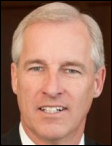








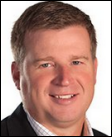
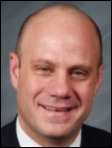
















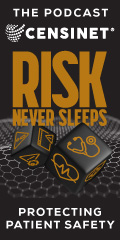


































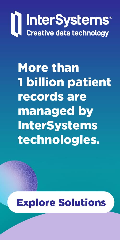





















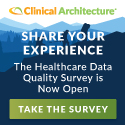











Is this HIStalk or Reddit? Hard to tell the difference with the comments being posted.